The West Bank of Luxor is a treasure trove of ancient Egyptian history, offering visitors a glimpse into the monumental achievements of one of the world’s most fascinating civilizations. Situated on the opposite side of the Nile River from the modern city of Luxor, the West Bank is home to some of Egypt’s most iconic and well-preserved archaeological sites, including the Valley of the Kings, the Valley of the Queens, and the magnificent mortuary temples of Egypt’s greatest pharaohs. This region is not just a destination for lovers of history and archaeology; it’s a chance to walk in the footsteps of the ancient Egyptians, exploring tombs, temples, and monuments that have withstood the test of time. The West Bank’s rich collection of tombs and temples—many of which are adorned with breathtaking murals, statues, and hieroglyphs—offers an unparalleled opportunity to learn about the religious, political, and cultural practices that shaped ancient Egypt. Whether you’re gazing up at the towering statues of Ramses II or marveling at the intricate murals in the Tomb of Nefertari, the West Bank is a place where the past comes alive, and where every turn offers a new discovery.
- Egypt Tour Magic
- Egypt Tour Packages
- Excursions in Egypt
- Cairo Tours and Excursions
- Hurghada Tours and Excursions
- Soma Bay Tours and Excursions
- Makadi Bay Tours and Excursions
- Sahl Hasheesh Tours and Excursions
- El Gouna Tours and Excursions
- Marsa Alam Tours and Excursions
- Port Ghalib Tours and Excursions
- El Quseir Tours and Excursions
- Dendera and Abydos Day Tours
- Aswan Tours and Excursions
- Luxor Tours and Excursions
- Alexandria Tours and Excursions
- Sharm El Sheikh Tours and Excursions
- Top Rated Tours in 2025
- Optional Excursions in Egypt
- Private Transfer
- Blogs About egypt
- Ancient Egypt
- What You Need To know Before Your First Trip To Egypt
- Best Places to Visit in Egypt 2025
- Top Attractions in Red Sea Resorts 2025
- Top 10 Tourist Activities in Egypt
- Top 30 Activities You Can’t Miss in Egypt
- The Guide to Guided Tours in Egypt
- Egypt’s Ancient and Modern History
- The Nile River
- The Deserts of Egypt
- Historical Sites in Egypt
- Cairo
- Alexandria
- Luxor
- Aswan
- The Red Sea
- Dendera Temple
- El Fayoum Oasis
- Bahariya Oasis
- Siwa Oasis
- Al Alamein
- Marsa Matruh
- Ancient Egyptian gods
- famous Egyptian dishes
- UNESCO World Heritage sites
- About Us
- Why Egypt Tour Magic
- Egypt Tour Magic
- Egypt Tour Packages
- Excursions in Egypt
- Cairo Tours and Excursions
- Hurghada Tours and Excursions
- Soma Bay Tours and Excursions
- Makadi Bay Tours and Excursions
- Sahl Hasheesh Tours and Excursions
- El Gouna Tours and Excursions
- Marsa Alam Tours and Excursions
- Port Ghalib Tours and Excursions
- El Quseir Tours and Excursions
- Dendera and Abydos Day Tours
- Aswan Tours and Excursions
- Luxor Tours and Excursions
- Alexandria Tours and Excursions
- Sharm El Sheikh Tours and Excursions
- Top Rated Tours in 2025
- Optional Excursions in Egypt
- Private Transfer
- Blogs About egypt
- Ancient Egypt
- What You Need To know Before Your First Trip To Egypt
- Best Places to Visit in Egypt 2025
- Top Attractions in Red Sea Resorts 2025
- Top 10 Tourist Activities in Egypt
- Top 30 Activities You Can’t Miss in Egypt
- The Guide to Guided Tours in Egypt
- Egypt’s Ancient and Modern History
- The Nile River
- The Deserts of Egypt
- Historical Sites in Egypt
- Cairo
- Alexandria
- Luxor
- Aswan
- The Red Sea
- Dendera Temple
- El Fayoum Oasis
- Bahariya Oasis
- Siwa Oasis
- Al Alamein
- Marsa Matruh
- Ancient Egyptian gods
- famous Egyptian dishes
- UNESCO World Heritage sites
- About Us
- Why Egypt Tour Magic
Exploring the Wonders of the West Bank of Luxor
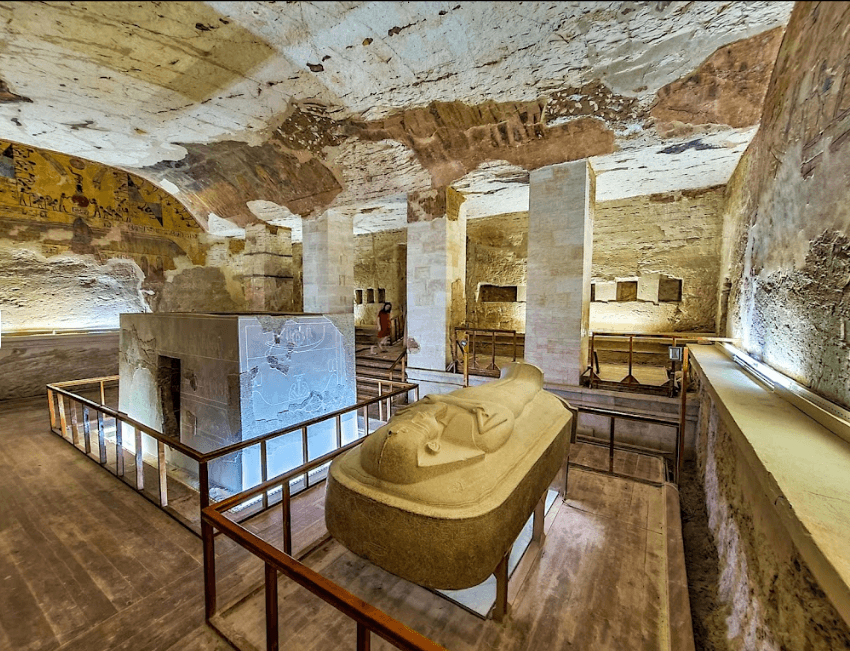
The Valley of the Kings
The Valley of the Kings, located on the West Bank of Luxor, is perhaps the most famous archaeological site in Egypt. It is home to the tombs of pharaohs and powerful nobles from the New Kingdom period (16th to 11th century BCE), making it a must-see destination for history enthusiasts. The valley contains over 60 tombs, including those of some of Egypt's most iconic rulers, such as Tutankhamun, Ramses II, and Seti I. The tombs were carved into the limestone cliffs of the valley to serve as elaborate burial chambers for the pharaohs, their families, and high-ranking officials. The tombs are decorated with vibrant murals and intricate hieroglyphs that depict scenes from the Book of the Dead, offering insight into the pharaohs’ journey to the afterlife. Among the most notable tombs is that of Tutankhamun, discovered by archaeologist Howard Carter in 1922. The tomb's discovery, along with its treasures, captured global attention. Although smaller than some of the other tombs, it is among the most well-preserved and rich with artifacts. The tomb of Ramses VI, with its grand design and stunning wall paintings, is another highlight, showcasing the artistic prowess of the ancient Egyptians. Visiting the Valley of the Kings offers a rare opportunity to step into the world of ancient Egypt’s rulers and experience firsthand their elaborate preparations for the afterlife.
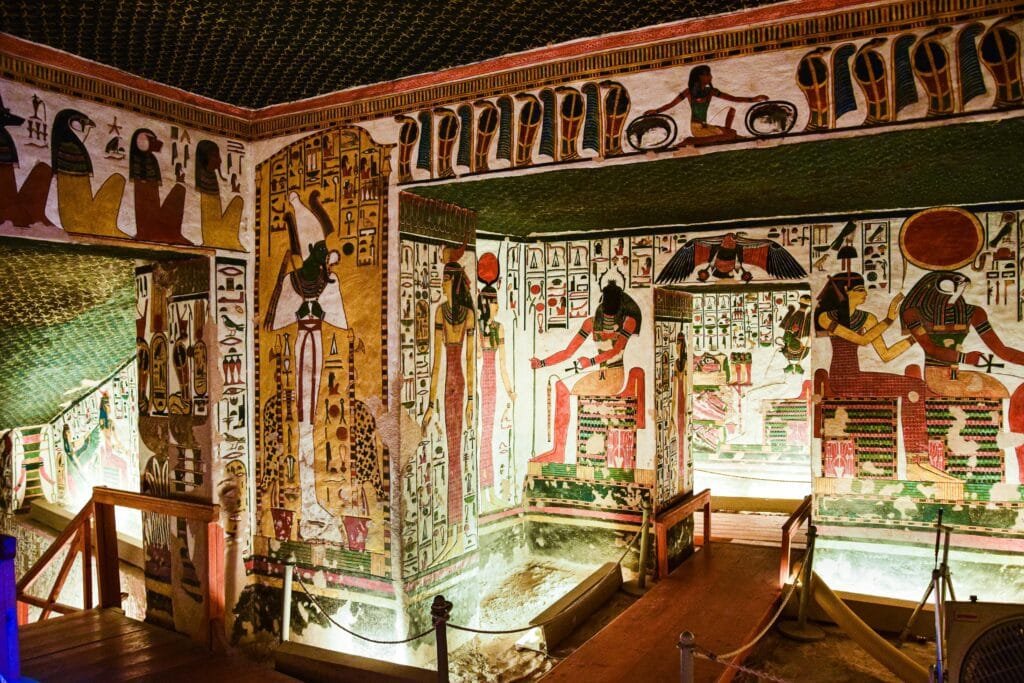
The Valley of the Queens
The Valley of the Queens, located near the Valley of the Kings, served as the burial ground for Egypt's royal women, including queens, princes, and princesses. One of the most renowned tombs in this valley is that of Queen Nefertari, the beloved wife of Ramses II. Her tomb is famous for its extraordinary wall paintings that depict her in a variety of religious and mythological scenes, with some of the most vibrant colors and intricate detail ever discovered. The artistry in Nefertari's tomb is unparalleled, offering a glimpse into the opulence and grandeur of the royal family. Apart from Nefertari’s tomb, the Valley of the Queens contains the final resting places of many other royal figures, including the wives and children of pharaohs. Some tombs, though smaller, still contain intricate artwork and hieroglyphs, which tell the stories of the lives and afterlife beliefs of the queens and princesses. Visitors to this valley can explore the beautifully decorated tombs, many of which feature scenes of daily life, worship, and divine protection. The calm and serene atmosphere of the Valley of the Queens makes it a more peaceful and reflective experience compared to the busier Valley of the Kings, yet it remains equally significant in understanding the role of royal women in ancient Egyptian society.
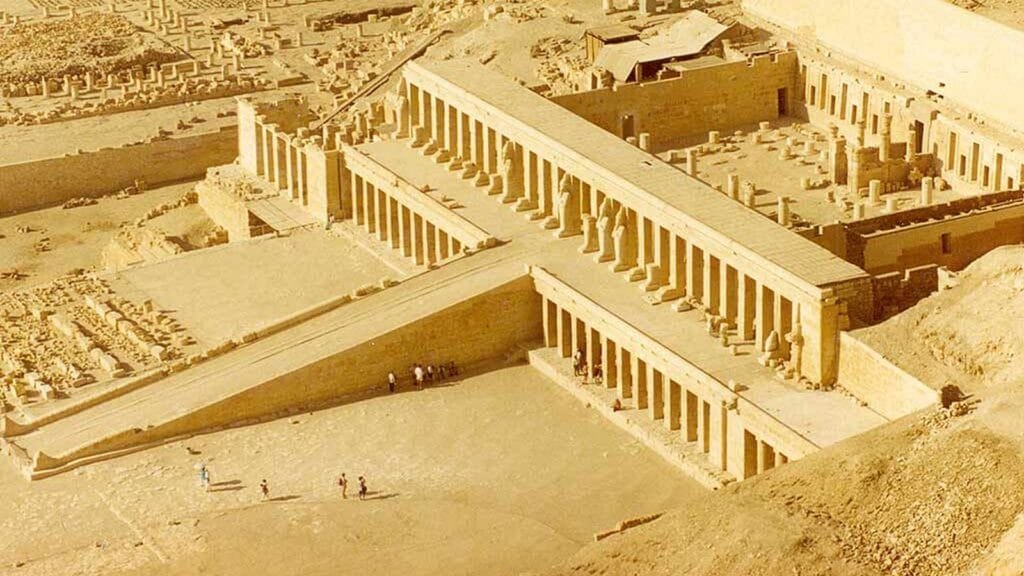
The Mortuary Temple of Hatshepsut
The Mortuary Temple of Hatshepsut, one of the most iconic structures on the West Bank of Luxor, stands as a testament to the power and legacy of Egypt’s female pharaoh. Queen Hatshepsut, who ruled during the 18th Dynasty, is often regarded as one of the most successful and innovative pharaohs of ancient Egypt. Her mortuary temple, located at Deir el-Bahari, is a masterpiece of architectural design and engineering, blending seamlessly into the surrounding cliffs. The temple consists of three levels, with colonnaded terraces and grand stairways, creating a striking visual impact. The walls of the temple are adorned with vivid reliefs depicting Hatshepsut’s reign, including her famous trading expedition to Punt, which brought exotic goods and wealth to Egypt. These reliefs also highlight her divine birth and her coronation as pharaoh, portraying her as both a ruler and a powerful deity. The temple's design is also notable for its symmetry and balance, influenced by the ancient Egyptians' deep understanding of geometry and aesthetics. Over the centuries, parts of the temple were damaged, but restoration efforts have allowed visitors to appreciate the full grandeur of Hatshepsut’s architectural vision. The temple remains one of the most significant and awe-inspiring monuments in Egypt, providing an enduring legacy of a female ruler who defied tradition and left her mark on Egyptian history.
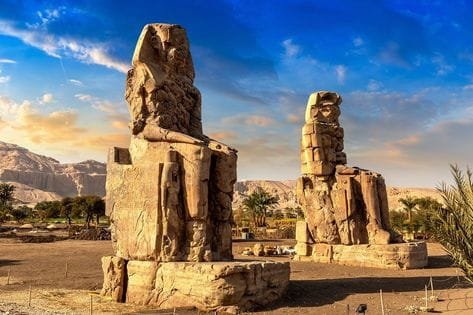
The Colossi of Memnon
Standing at the entrance to the Mortuary Temple of Amenhotep III, the Colossi of Memnon are two massive statues that have become an enduring symbol of ancient Egypt’s grandeur. These colossal stone figures, each towering over 18 meters (59 feet) high, depict Amenhotep III, one of Egypt’s most prosperous pharaohs. The statues were originally erected to guard the entrance to his mortuary temple, which was once an enormous complex, but much of it has since been destroyed over the centuries. Despite their current ruined state, the Colossi of Memnon are still awe-inspiring. Their faces, though worn by time, display a sense of majesty, while the sheer size of the statues emphasizes the power of the pharaoh they represent. The Colossi are famous for the "singing" phenomenon, where, during the early morning hours, the statues would produce strange sounds caused by the wind interacting with the cracks in the stone. This phenomenon was believed by ancient Egyptians to be the voice of the dead king, and it attracted pilgrims from far and wide. Today, visitors to the West Bank of Luxor can admire the scale of these ancient statues and reflect on the cultural significance they held in Egyptian religion and architecture. The Colossi of Memnon, though now separated from their original temple, remain one of the most recognizable landmarks on the West Bank.
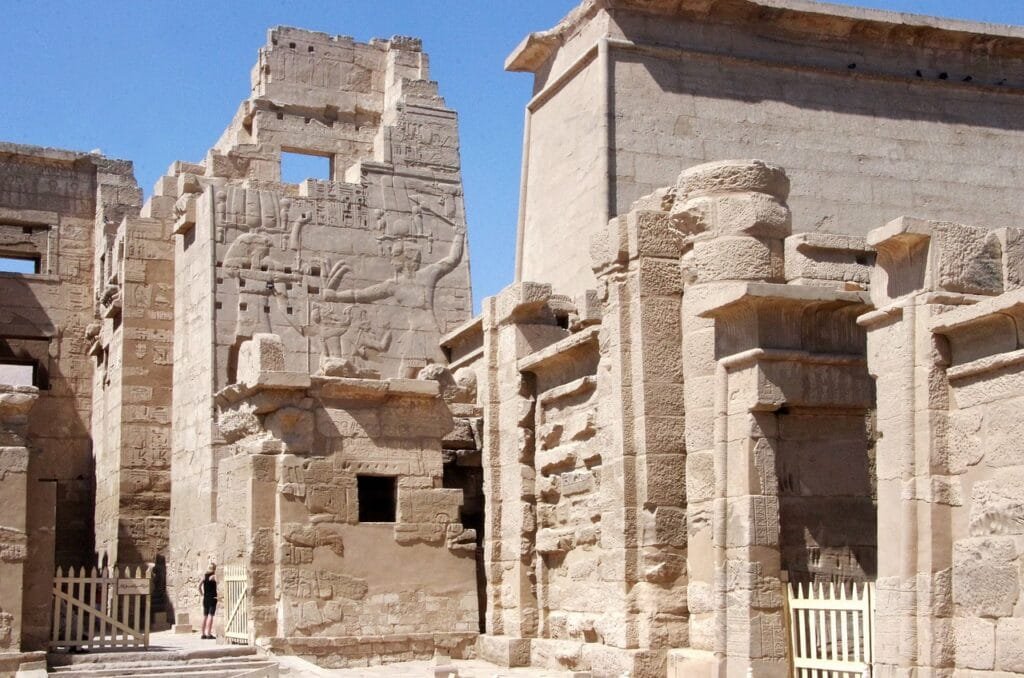
Medinet Habu
Medinet Habu, the Mortuary Temple of Ramses III, is one of the most well-preserved temples on the West Bank of Luxor. Located at the foot of the Theban hills, the temple complex is a stunning example of New Kingdom architecture. Built during the reign of Ramses III, who ruled during the 20th Dynasty, the temple served both as a place of worship and as a commemorative monument to the pharaoh’s military triumphs. The walls of Medinet Habu are covered with intricate reliefs that depict Ramses III’s victories over foreign invaders, including the famous Sea Peoples, as well as scenes of offerings to the gods. The temple’s vast courtyards, colonnades, and pylons are complemented by the impressive remains of a surrounding defensive wall, which adds to the temple’s formidable appearance. Medinet Habu is often less crowded than some of the other West Bank temples, offering visitors a more peaceful and intimate experience while exploring the intricate artwork and architecture. The temple is particularly notable for its preservation, with many of its carvings still clearly visible, providing a rare and authentic glimpse into ancient Egyptian religious and political life. Visiting Medinet Habu offers a deep dive into the military and cultural achievements of Ramses III and the grandeur of the late New Kingdom period.
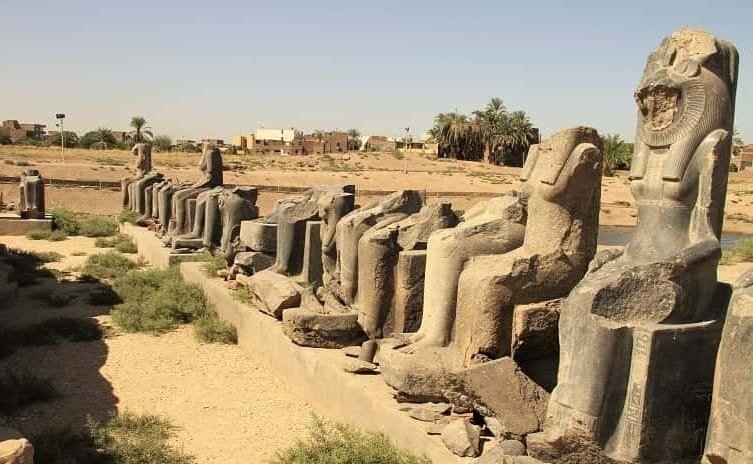
The Temple of Merenptah
Though not as famous as some of the other monuments on the West Bank, the Temple of Merenptah is a significant site that offers unique insight into the reign of Pharaoh Merenptah, the son of Ramses II. The temple, which was built during the 19th Dynasty, is located near the southernmost edge of the West Bank and is often overlooked by tourists. Despite its relative obscurity, the temple is notable for its architectural features and the inscriptions found on its walls. The most famous inscription at the temple is the "Israel Stele," which contains one of the earliest references to the people of Israel in Egypt. This stele, which commemorates Merenptah’s military victories in the Levant, provides valuable historical context for understanding Egypt’s interactions with neighboring regions. The temple itself is smaller than others on the West Bank but remains well-preserved and offers a more tranquil experience for visitors seeking to explore less crowded sites. The Temple of Merenptah, with its historical significance and relatively intact structure, provides an enriching and informative experience for those wishing to uncover more about Egypt's ancient past.
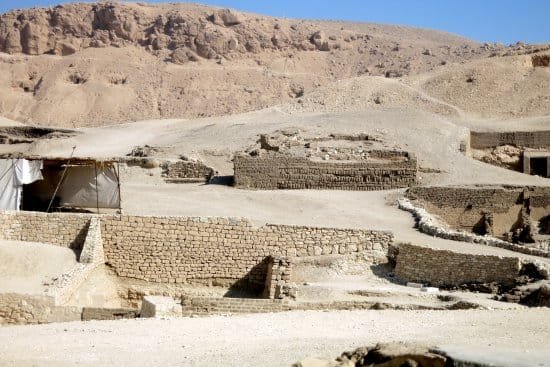
The Tombs of the Nobles
The Tombs of the Nobles, located on the West Bank of Luxor, offer a fascinating glimpse into the lives of Egypt’s elite, including high-ranking officials, priests, and their families. Unlike the grand tombs of the pharaohs, these tombs are more modest in size but are richly decorated with scenes from daily life, providing valuable insight into the social structure and culture of ancient Egypt. The tombs are scattered throughout the hills of Sheikh Abd el-Qurna, with over 400 tombs of noble families still remaining. The artwork found within these tombs depicts a variety of themes, such as hunting, feasting, and religious rituals. The tombs also reveal the importance of the afterlife, with offerings and symbolic depictions meant to ensure a prosperous existence beyond death. Some of the most famous tombs in the area include the tomb of Rekhmire, a vizier during the reign of Thutmose III, and the tomb of the powerful official Inherkhau, both of which feature beautifully preserved wall paintings. Many of the tombs in this area remain unmarked and can be more challenging to locate, offering adventurous visitors a chance to explore Egypt’s rich history away from the more tourist-heavy sites. For those looking to understand the lives of Egypt’s administrative and religious elite, the Tombs of the Nobles provide a remarkable opportunity to experience the intimate, everyday life of the ancient Egyptian upper class.

The Ramesseum
The Ramesseum, the mortuary temple of the great pharaoh Ramses II, is one of the most impressive and historical monuments on the West Bank of Luxor. Ramses II, also known as Ramses the Great, is often regarded as one of Egypt’s most powerful and influential rulers, and his mortuary temple stands as a tribute to his reign. The Ramesseum was originally a grand structure with towering columns, massive statues, and intricate reliefs that depicted the king’s military victories, religious offerings, and divine status. The temple's iconic colonnade, with its massive statues of Ramses II, serves as a testament to his godlike stature and the wealth and power Egypt enjoyed during his rule. Although much of the temple has fallen into ruin over the centuries, it remains one of the most significant archaeological sites in Egypt. One of the most notable features of the Ramesseum is a large fallen statue of Ramses II, which originally stood over 16 meters tall and was once one of the largest statues ever erected in Egypt. The temple is also famous for its beautiful paintings and reliefs, which depict the pharaoh’s great military campaigns, including his battle against the Hittites at the Battle of Kadesh. Visitors to the Ramesseum can witness firsthand the grandeur of Ramses II’s reign and the architectural mastery of ancient Egyptian temple construction.
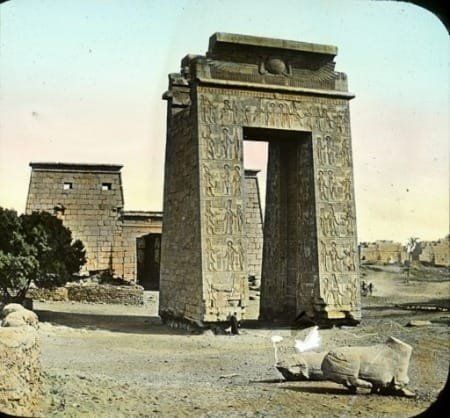
The Temple of Khonsu
While the Karnak Temple Complex is famous for its grand temples and awe-inspiring Hypostyle Hall, the Temple of Khonsu, dedicated to the moon god Khonsu, is one of the lesser-known but equally stunning sites within Karnak. The temple is relatively small compared to the main temple of Amun, but it is a treasure trove of history and intricate carvings. The Temple of Khonsu was built during the 19th Dynasty under the reign of Ramses III, and it remains in remarkably good condition. Its beautiful pylons, courtyards, and sanctuary provide a perfect example of how Egyptian temples were designed to honor the gods and facilitate religious rituals. The temple is especially notable for its well-preserved reliefs, which depict Khonsu in various forms, as well as scenes of the king offering sacrifices to the god. The interior of the temple is adorned with detailed hieroglyphs that highlight religious practices and divine connections. The Temple of Khonsu, though less visited than other sites in the Karnak complex, is a hidden gem that allows visitors to appreciate the craftsmanship and religious devotion of the ancient Egyptians.
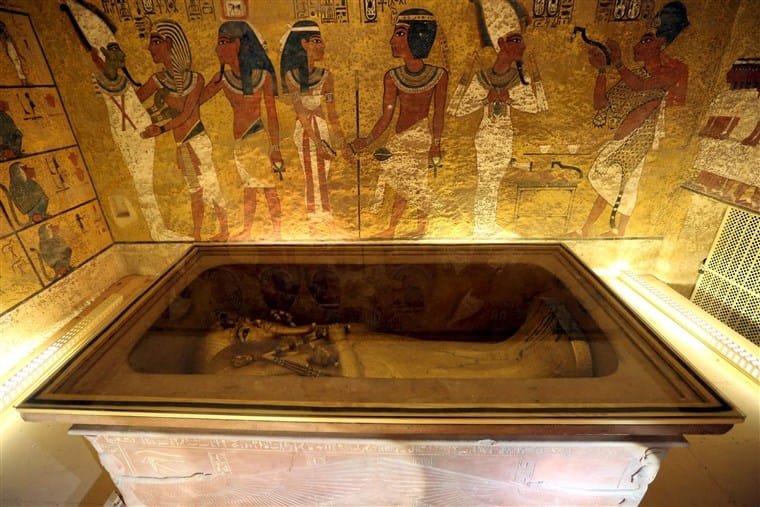
The Tomb of Tutankhamun
The Tomb of Tutankhamun, located in the Valley of the Kings, is one of the most famous and historically significant tombs ever discovered in Egypt. Tutankhamun, often called the "Boy King," ascended the throne at a young age and died unexpectedly at just 18 years old. His tomb, discovered in 1922 by archaeologist Howard Carter, was filled with priceless treasures and artifacts that provided an unprecedented look into the wealth and opulence of ancient Egyptian royal life. Although Tutankhamun’s tomb is relatively small compared to those of other pharaohs, it is packed with extraordinary treasures, including his golden death mask, chariots, and a wide array of jewelry, weapons, and ceremonial items. These artifacts offer an unparalleled insight into the craftsmanship and artistry of the period. The tomb’s walls are adorned with vibrant paintings that illustrate scenes from the Book of the Dead, showing the king’s journey into the afterlife and his protection by various gods. One of the most remarkable aspects of the tomb is that it was found largely intact, with many of its treasures still in place. The discovery of the tomb captured the world’s imagination and continues to be one of the most significant archaeological finds in history. A visit to Tutankhamun’s tomb provides a glimpse into the mysterious life and death of Egypt’s most famous young ruler, making it an essential stop on any tour of the West Bank.
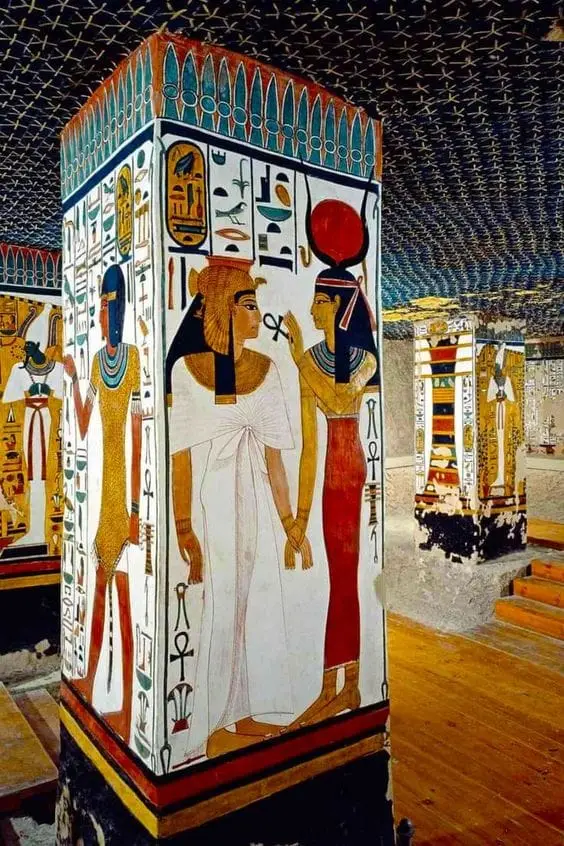
The Tomb of Nefertari
The Tomb of Nefertari, located in the Valley of the Queens on the West Bank of Luxor, is one of the most extraordinary and beautifully decorated tombs ever discovered in Egypt. Nefertari was the beloved wife of Pharaoh Ramses II, often referred to as one of the most powerful and respected rulers of ancient Egypt. The tomb, often considered a masterpiece of ancient Egyptian art, is renowned for its vivid and well-preserved wall paintings, which depict Nefertari in various religious and mythological scenes, as well as moments of daily life. The artwork is considered to be some of the finest in ancient Egypt, showcasing the unparalleled skill of the artisans who created it. The tomb’s walls feature scenes of Nefertari worshiping the gods, making offerings, and being protected by various deities. In some of the murals, she is shown in the presence of the gods Isis, Hathor, and Anubis, while in others, she is portrayed engaging in ritualistic acts. These intricate and colorful paintings provide invaluable insight into the religious beliefs and spiritual practices of the time. The walls also highlight her role as the queen, with depictions of her holding a scepter, symbolizing her power and status. The tomb itself is a simple, yet grand structure, consisting of a long corridor that leads to a burial chamber. The passageways are adorned with inscriptions and decorations that tell the story of Nefertari’s life, death, and journey to the afterlife. The tomb’s architectural layout, coupled with its stunning artwork, reflects the importance of Nefertari in the ancient Egyptian royal family. One of the most remarkable features of the tomb is the preservation of its color. The murals have retained their vibrancy through thousands of years, allowing visitors to experience them almost as they were seen by those who first walked through the tomb centuries ago. The Tomb of Nefertari is a testament to her immense significance as Ramses II’s queen and is considered one of the most stunning and remarkable sites in the entire Valley of the Queens. A visit to this tomb offers a rare opportunity to witness the beauty and grandeur of ancient Egyptian royalty and their reverence for the afterlife.


